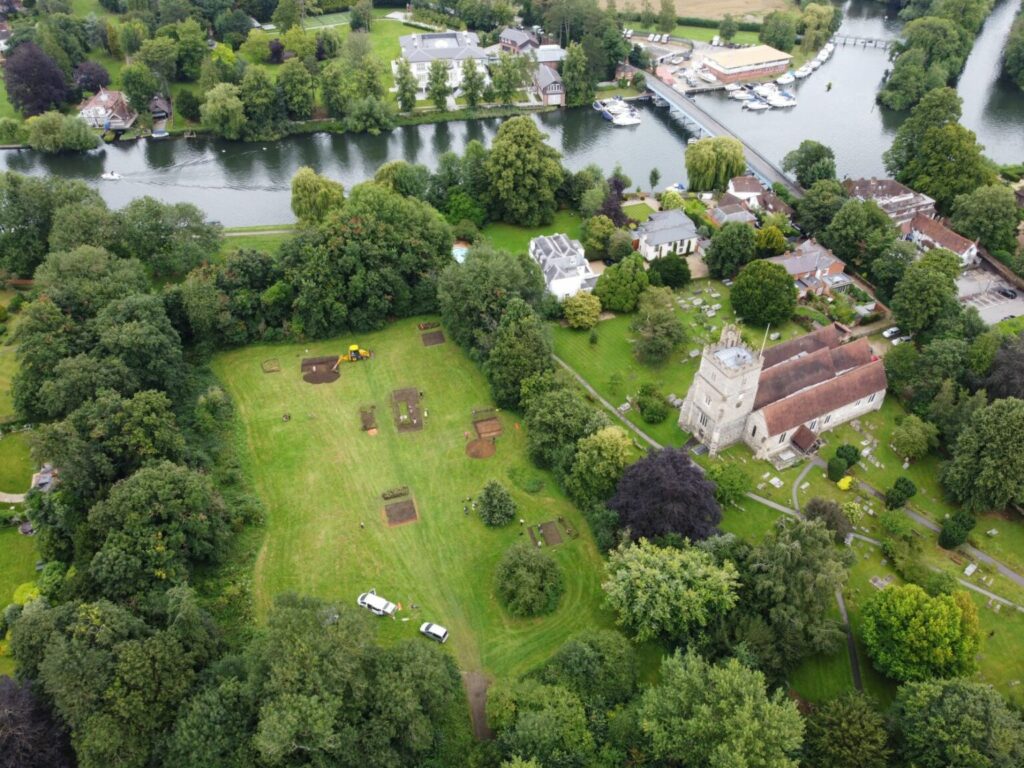
Twenty bodies found next to Cookham church confirm that the Saxon convent operated as a hospital says Professor of Early Medieval Archaeology Gabor Thomason.
He was speaking at the end of Reading University‘s annual dig the west side of Cookham’s riverside church which is the abbey’s successor.
“There appears to be a high prevalence of disease and healed injuries present in disturbed bone redeposited in later graves as well as intact burials. Parts of the cemetery were heavily used. Burials here intercut each other resulting in the disturbance of skeletal material placed back in the fill of subsequent graves. This demonstrates that individuals were receiving medical attention and care at the monastery over successive generations.
‘Our discoveries highlight the importance of Anglo-Saxon monasteries as centres of healing and medical care.
‘We can gain an impression of this role from contemporary historical sources, but Cookham is one of the first archaeological sites to provide detailed physical evidence for the range of diseases involved and medical care dispensed by contemporary monastic communities.’
Also during August the excavation of a 9th-century well was completed and a timber lined ditch near the Thames was identified as a leat for a watermill.
Queen Cynethryth, widow of Offa, was abbess from 796 to 798.
Last month’s work ended at the weekend with the vicar Stephen Mills blessing the re-buried bodies.
The University is planning to continue excavations every August until at least 2028.